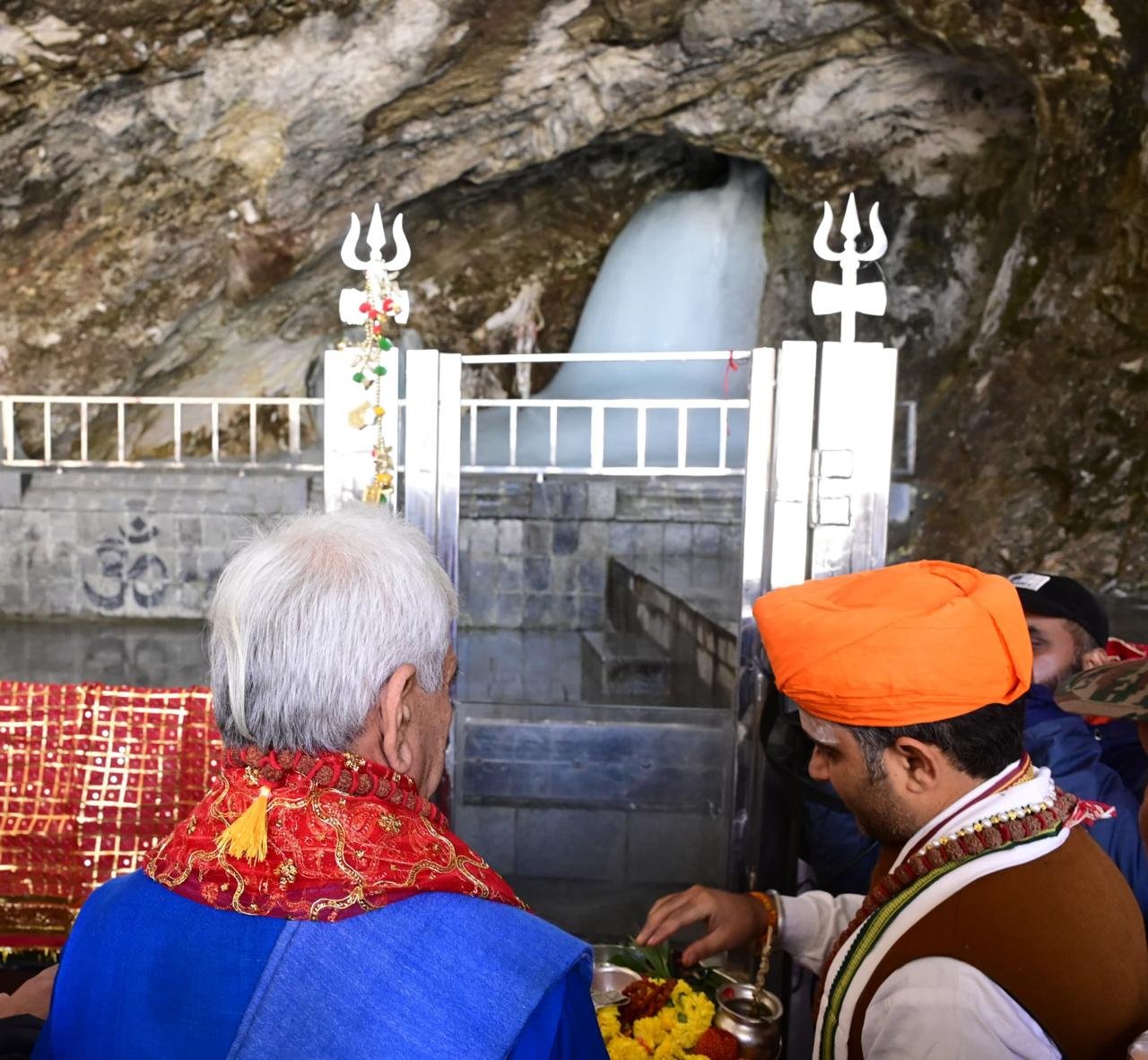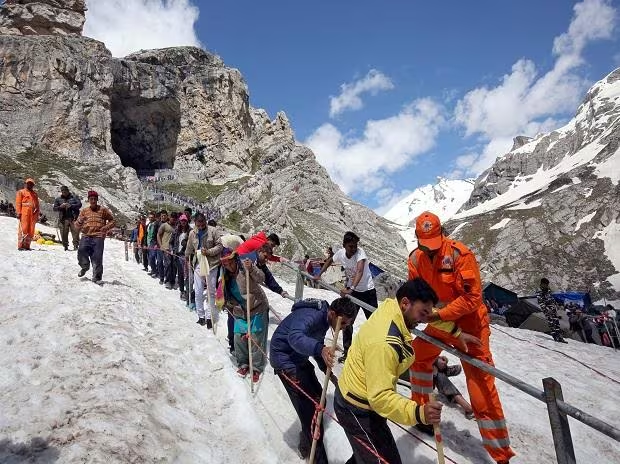.webp)
Faiyaz Ahmad Fyzie
According to Hindu tradition and Kashmiri folklore, the cave shrine of Lord Shiva in the snowbound Himalayan Mountains of South Kashmir was discovered in 1850 AD by an indigenous Pasmanda Gurjar shepherd Buta Malik. He also made the first footpath for the pilgrims to reach the cave shrine that is site of the annual pilgrimage for Hindus from all over the world and has taken off.
The story says that Buta Malik was grazing his cattle on the mountain when a Sadhu appeared before him. He handed over a bag full of charcoal to him. Malik walked home with it, but when it opened the bag, it had turned into gold. He rushed back to the spot to thank the Sadhu and to his amazement, he found the cave and ice Shiva Lingam there. That place is today the Amarnath cave where lakhs of pilgrims go to have the darshan of ice lingam formed naturally inside a spacious cave atop a glacier.
As we know the Pasmanda Muslims and Hindus have common ancestors and almost same culture. They are born on this land and have the same DNA and lineage. It was a Pasmanda’s privilege to discover this holy place for his Hindus and be showered with the blessings of Lord Shiva.

Lt Governor of J&K Manoj Sinha performing the first Aarti at the cave of Lord Amarnath
The discovery of Amarnath's cave shows an intrinsic connection between Pasmanda and Hindus. It gets more credibility as this story is not from the medieval but the modern era.
For Hindus, Amarnath is one of the oldest pilgrimages. According to Bhrigu Purana, an ancient scripture, The abode of Lord Shiva was first discovered by Maharishi Bhrigu, whose ashram exists in the Ballia district of UP. I am fortunate to be a native of the place where this Ashram is. Kashmir valley was under water – it was a lake – something that is supported by geological studies. It was Rishi Kashyap who drilled a hole in the mountain and drained the water through rivers and streams. The Kashmir Valley is thus came to be named after this sage.
Maharishi Bhrigu was going towards the Himalayas, when his eyes fell on the Amarnath cave. He was the first person to have the darshan of the sacred Lingam of Lord Amarnath. From that time, people visited Amarnath cave to worship Lord Shiva and seek his blessings.
Here are some facts about the Cave shrine of Lord Amarnath:
 Pilgrims moving towards the Holy Cave of Lord Shiva atop a glacier
Pilgrims moving towards the Holy Cave of Lord Shiva atop a glacier
According to the villagers of Batkot, India’s first Prime Minister Pandit Jawahar Lal Nehru visited Malik family during his visits to Kashmir. However, gradually, the importance of this family diminished and their role in the piglimae was truncated the Farooq Abdullah government.
This discovery of Amarnath cave reflects the reality of the Pasmandas sharing a cordial relationship with the Hindus, while the Ashraafs – considered outsiders – did not have the same feelings.
According to the popular story in Jammu and Kashmir, the descendants of Buta Malik were the custodians of this temple. Besides, the priests of Dashnami Akhara and Purohit Sabha Mattan were also entrusted with the responsibility of taking care of the holy place.
ALSO READ : Rasul Galwan: Pasmanda tribesman of Leh after whom Galwan Valley is named
In 2,000, the Amarnath Shrine Board was formed to look after the affairs of the temple and is now headed by the Governor of the state. Buta Malik’s descendants are, however, continuing their spirituals and emotionalattachment to the Holy Cave though they have no say in its affairs.
The author is a leading Pasmanda activist
